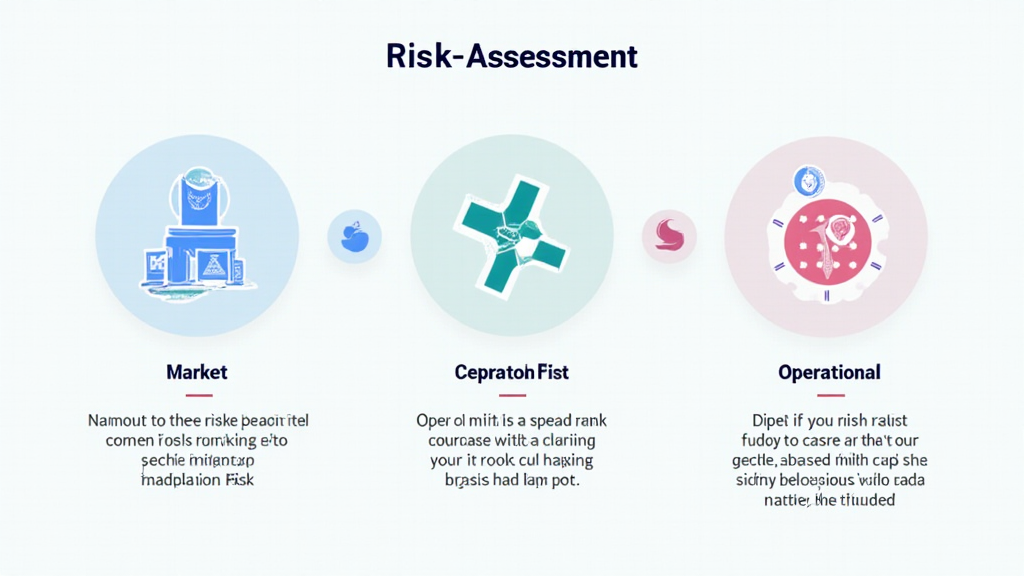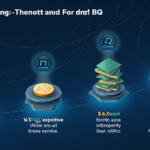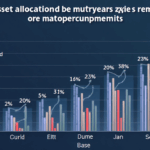Introduction
With $4.1B lost to DeFi hacks in 2024, the importance of cryptocurrency risk assessment has never been clearer. Investors are keenly aware that as digital assets become more mainstream, so do the risks associated with them. Understanding these risks is crucial for securing investments and ensuring long-term success in the cryptocurrency space. In this comprehensive guide, we will delve into the various factors that contribute to cryptocurrency risk and offer practical strategies for mitigating these risks to protect your investments.
Understanding Cryptocurrency Risks
Just like traditional investments, cryptocurrencies come with their unique set of risks. Here’s a breakdown of the different types of risks you might encounter:
- Market Risk: The potential for changes in the market to affect the value of your digital assets.
- Liquidity Risk: The risk associated with not being able to sell your investment quickly enough at a fair price.
- Regulatory Risk: The possibility that government regulations could negatively impact your investments.
- Operational Risk: The risks associated with the operations of cryptocurrency exchanges and other platforms.
- Security Risk: The risk of hacks or breaches leading to the loss of digital assets.
- Technology Risk: Risks related to software bugs and vulnerabilities in blockchain and smart contracts.
The Importance of Risk Assessment
Risk assessment allows investors to identify, analyze, and prioritize risks. With the right risk assessment framework, investors can make informed decisions to safeguard their assets. Here’s why it’s essential:

- Informed Decision-Making: A thorough risk assessment can guide you in choosing which cryptocurrencies to invest in based on their risk profile.
- Better Risk Management: Understanding risks allows for the development of mitigation strategies to protect your investment portfolio effectively.
- Regulatory Compliance: With increasing regulations, risk assessment ensures your investments comply with the law.
Case Example: A Practical Risk Assessment
Consider a scenario where you want to invest in a new altcoin. To assess the risk, you would look into the following:
- Whitepaper Quality: Does the project have a clearly defined mission and roadmap?
- Developer Activity: Is the project team active and committed to updates?
- Community Engagement: How engaged and vibrant is the community surrounding the cryptocurrency?
Common Mistakes in Cryptocurrency Risk Assessment
Even seasoned investors can fall victim to common pitfalls in risk assessment. Here are a few mistakes to avoid:
- Ignoring Community Sentiment: Failing to gauge community sentiment can lead to poor investment choices (e.g., Twitter sentiment analysis).
- Overreliance on Price Trends: While historical price data is useful, it should not be the sole factor in decision-making.
- Neglecting Regulatory Changes: Regulations change frequently; staying updated is vital for compliance.
The Role of Technology in Risk Assessment
As technology evolves, so do tools for risk assessment. Here are some innovative technologies reshaping the landscape:
- Blockchain Analytics Tools: Tools like Chainalysis and Glassnode provide insights into market behavior and can highlight potential risks.
- Smart Contract Auditing: Employing professionals to audit smart contracts can significantly reduce technology risks.
- AI-Powered Prediction Models: These models can analyze historical data to predict future market movements and sentiment.
Tech Validation: A Smart Contract Audit
When auditing smart contracts, consider the following:
- Code Analysis: Ensure all code is error-free and follows best practices.
- Test Cases: Run test cases to identify any vulnerabilities or logical flaws.
- Expert Recommendations: Reputable firms like HIBT.com provide comprehensive audits to ensure security and compliance.
Investing in a Secure Future: Strategies for Mitigating Risks
To effectively mitigate risks, consider these strategies:
- Diversification: Spread your investments across different cryptocurrencies to reduce risk exposure.
- Cold Storage Solutions: Utilize cold wallets like the Ledger Nano X to enhance security and protect against hacks.
- Regular Portfolio Review: Periodically review and adjust your portfolio based on current conditions and risk assessments.
Vietnam’s Growing Crypto Market
As the cryptocurrency market expands globally, Vietnam has emerged as a key player with a significant user growth rate of approximately 37% in the last year. This heightens the necessity for effective risk assessment measures in the region:
- Education: Provide resources and training on cryptocurrency risks and investment strategies.
- Regulatory Framework: Encourage the establishment of a clear regulatory framework to protect investors.
- Community Support: Build a supportive community that shares insights and experiences related to cryptocurrency investment.
Conclusion
As we continue to navigate the ever-changing landscape of cryptocurrency, effective risk assessment remains vital to safeguarding investments. By understanding the various types of risks and implementing solid strategies to mitigate them, investors can better position themselves for success in the digital asset market.
At officialcryptonews, we are committed to providing you with the latest updates and insights on cryptocurrency risk assessment to help you make informed investment decisions.




